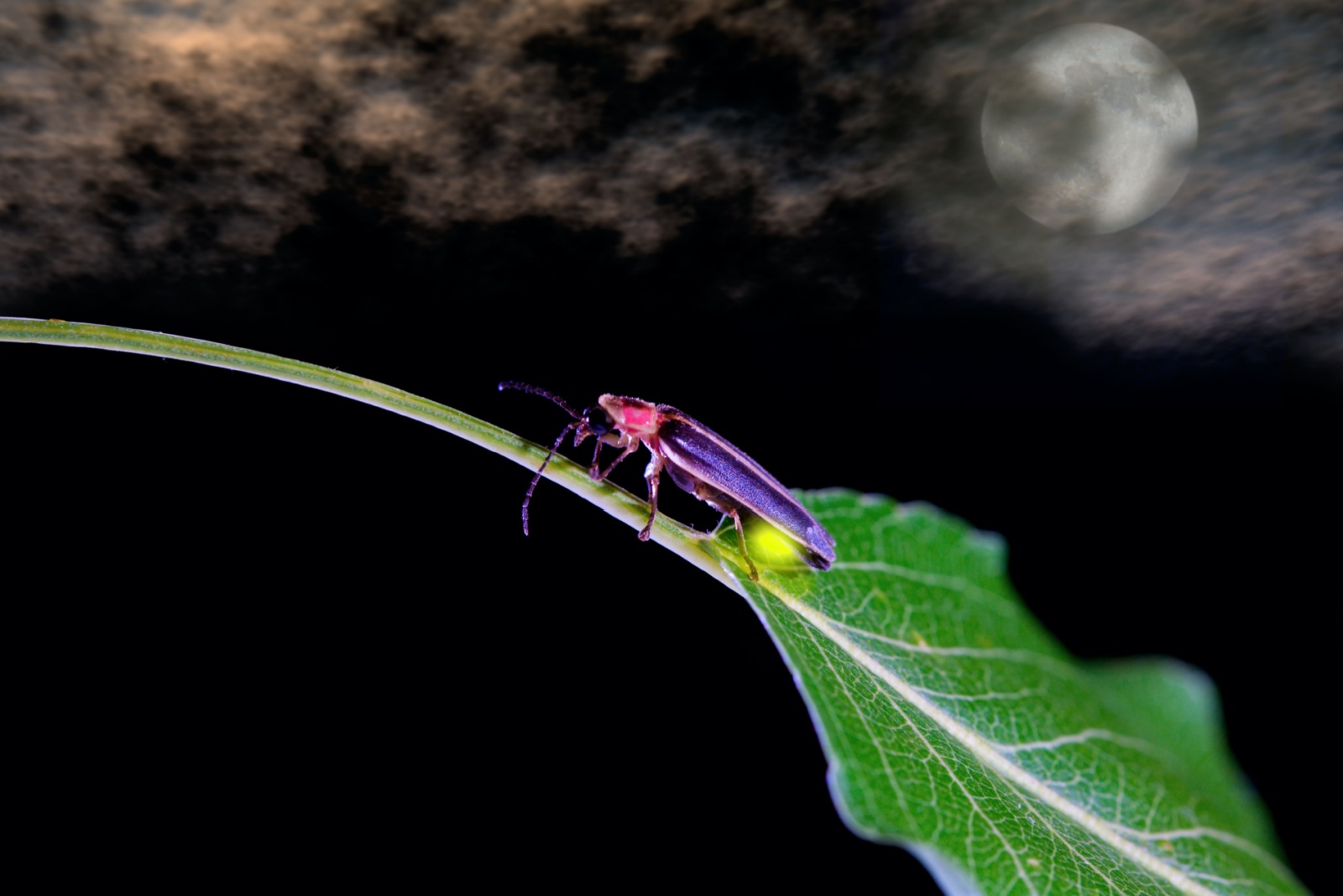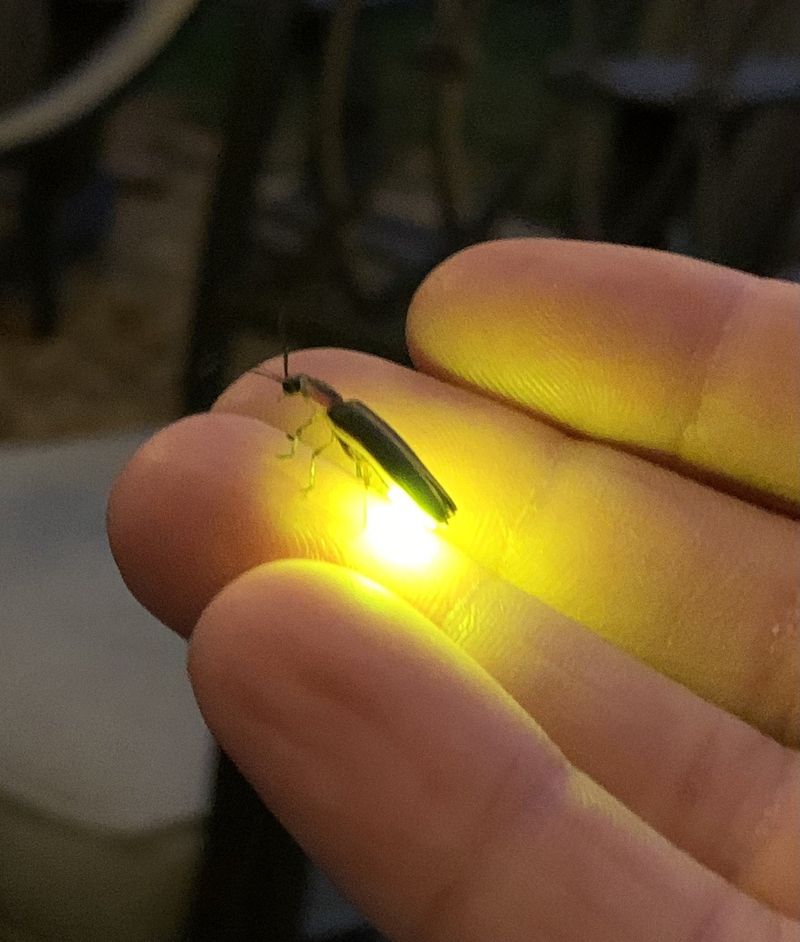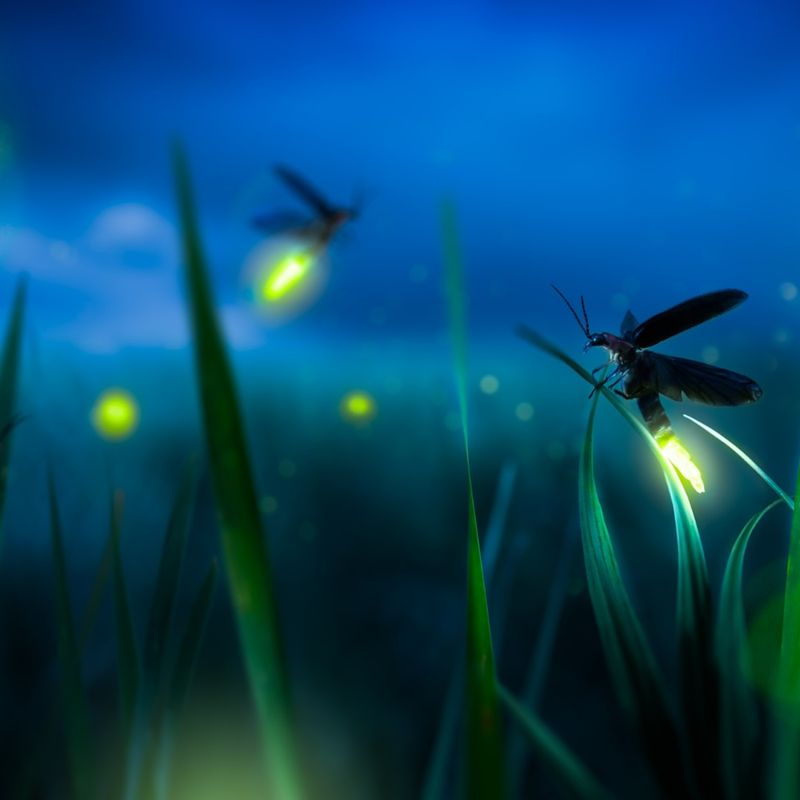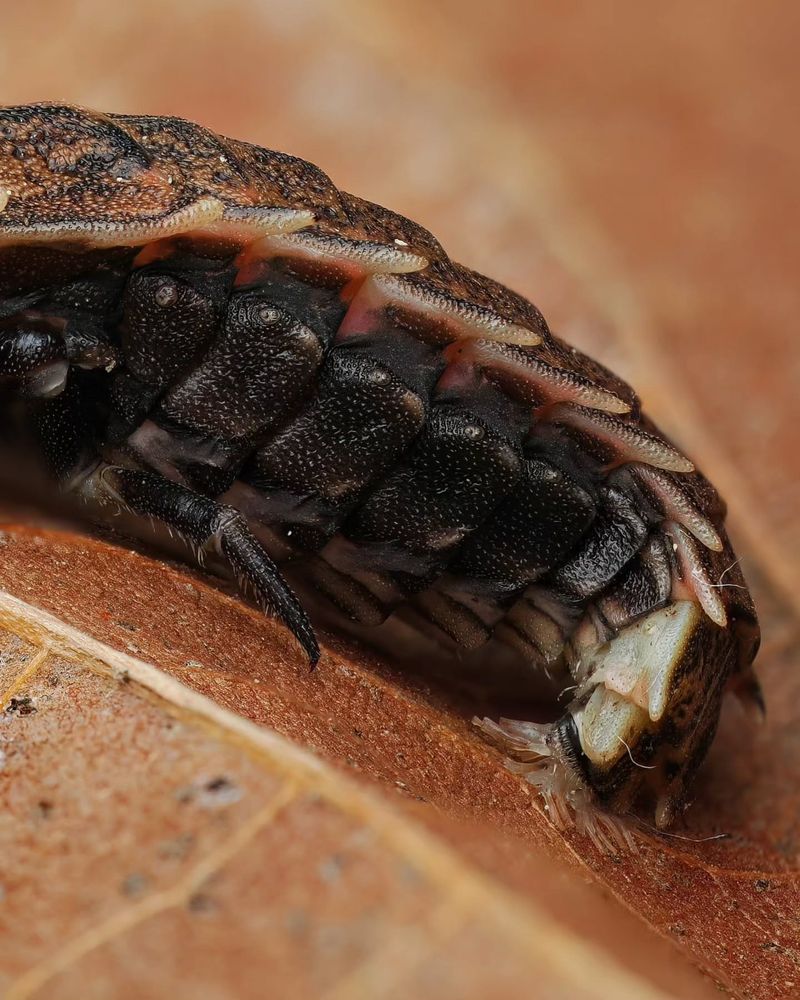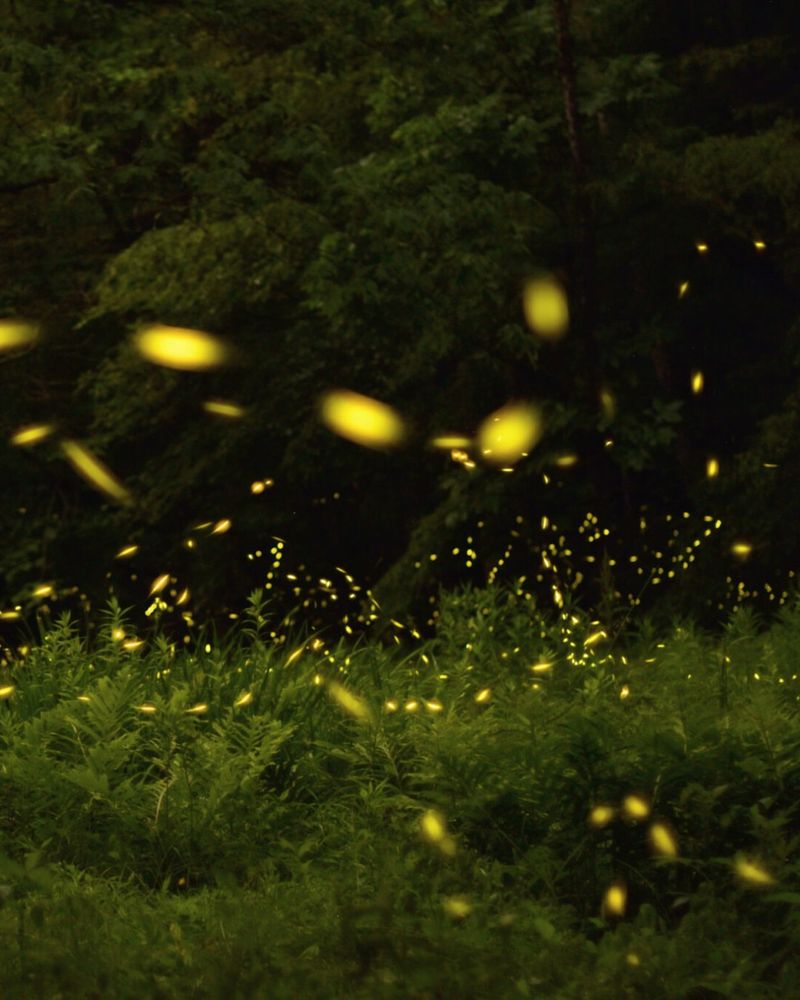Remember those magical summer evenings when fireflies lit up New York’s backyards and parks? These glowing insects aren’t just pretty – they’re important pollinators and part of our ecosystem.
Sadly, their numbers have been dropping across New York state in recent years, leaving many wondering where all the lightning bugs have gone.
1. Light Pollution Disrupts Their Glow
Streetlights, billboards, and house lights create a nighttime brightness that interferes with firefly communication. These insects use their flashing patterns to find mates, but they can’t see each other’s signals against bright artificial lights.
Many firefly species have specific flash patterns that get lost in the glow of our cities and suburbs. As New York continues to develop, the dark spaces where fireflies thrive become harder to find.
2. Pesticide Use Kills More Than Pests
Spraying your lawn might keep mosquitoes away, but it’s devastating for firefly populations. Common garden chemicals and mosquito treatments don’t discriminate between unwanted bugs and beneficial ones like fireflies.
Both adult fireflies and their underground larvae are extremely sensitive to these toxins. When neighborhoods coordinate mosquito spraying or when farmers use agricultural pesticides, entire firefly communities can be wiped out in a single season.
3. Habitat Loss From Development
Fireflies need specific environments to thrive – moist areas with tall grasses, woodlands, and natural debris. As New York converts more land into housing developments and shopping centers, these habitats disappear.
The larvae stage of fireflies requires undisturbed soil with plenty of organic matter. When developers clear land and install manicured lawns, they’re essentially erasing firefly nurseries. Once these specialized habitats are gone, firefly populations rarely recover in those areas.
4. Climate Change Alters Breeding Patterns
Fireflies have evolved to emerge and breed during specific temperature ranges. With New York’s climate becoming more unpredictable, their carefully timed life cycles are thrown into chaos.
Unusually early warm spells might trigger premature emergence, while sudden cold snaps can kill adult fireflies before they reproduce. The increasingly extreme weather patterns we’re experiencing in New York state mean fireflies often miss their narrow window for successful breeding.
5. Drought Conditions Harm Larvae
Young fireflies develop underground in moist soil environments. New York’s increasingly frequent drought periods dry out the soil, making it impossible for firefly larvae to survive.
These youngsters need consistent dampness to develop properly. Even short periods of extreme dryness can devastate an entire generation. With New York experiencing more intense dry spells in recent summers, firefly populations simply can’t bounce back fast enough between droughts.
6. Excessive Lawn Maintenance Destroys Microhabitats
Perfect lawns are firefly deserts! The push for manicured yards means we’re removing fallen leaves, trimming tall grasses, and eliminating the messy edges where fireflies live and breed.
Firefly larvae feed on snails, slugs and worms that thrive in natural ground cover. When we rake away leaves and debris or mow right to property edges, we’re unknowingly removing firefly food sources and shelter. Many New York homeowners don’t realize their yard care routines are contributing to firefly decline.
7. Commercial Collection Threatens Rare Species
Believe it or not, some fireflies are collected and sold! Certain species produce chemicals used in medical research and are harvested from the wild in large numbers.
While this isn’t as common in New York as in other regions, it still affects our local populations when collectors visit during peak firefly season. The rarest species with the most unique bioluminescent properties are often targeted most heavily, putting them at even greater risk of disappearing from our state forever.

